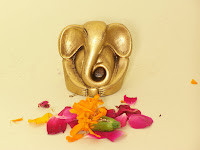Diwali is one of the biggest festivals of the Hindus. However, it is popular among people of other religions as well. It is not only celebrated in India but in different countries around the world.
History of Diwali and its Legends
The history of Diwali involves a number of mythological stories. Some of these stories are mentioned below.
Legend of Lord Rama and Sita: The story of Lord Rama, son of King Dasaratha of Ayodhya and his wife, Sita is the most popular among all legends of Diwali. Lord Rama was sent to exile by his father on insistence of the former’s step-mother. Rama’s wife, Sita and his brother, Lakshmana followed him. While they were in exile, Sita was abducted by demon King Ravana of Lanka. The reason behind it was that Lakshmana had cut off Surpanakha’s (Ravana’s sister) nose when she expressed her desire to marry him.
To save Sita from Ravana, Rama waged a war against him with the help of monkey god Hanuman and his army. Ravana was defeated and killed in the war. Lord Rama then returned to Ayodhya with his brother and wife.
The people of Ayodhya gave him a warm welcome and celebrated his return by lighting earthen lamps or diyas in his honor. Since that day, Diwali is celebrated with a lot of fervor and enthusiasm and observed as the day when the good triumphed over evil.




Defeat of Narkasura by Lord Krishna:
The story of Lord Krishna, the 8th incarnation of Lord Vishnu, and demon Narakasura is related to the history of Diwali celebrations. Narakasura used to capture young women and compelled them to stay with him. When Lord Krishna came to know about this, he fought with the five-headed monster who guarded the demon’s home.
Narakasura realized that if he died, it would give relief to thousands of people. Lord Krishna granted him death and freed the women who were tortured by the demon. This story reminds us of the victory of good over evil, which is the underlying concept for celebrating Diwali.
There goes another story of Lord Krishna in which he protected the people of Gokul from the rains and thunder sent by Lord Indra. Lord Indra was worshipped by the villagers of Gokul. But Lord Krishna asked them to worship the Govardhan Mountain instead. This enraged Indra, which is why he had brought in destruction for the villagers.
However, Krishna lifted the top of the mountain (which had fertile land around it) with his finger and protected the villagers. This story is a reminder of the fact that we should be thankful to nature for its bounties, just as Lord Krishna wanted the villagers of Gokul to worship Govardhan Mountain.
On Diwali, the food that we offer to Goddess Lakshmi and Lord Ganesha is a symbol of our gratitude to the almighty for having created nature which provides us with the essentials we need to sustain our lives.
Story of King Bali and Vamana Avatar:
King Bali was a ruler with a lot of power. So, the gods approached Lord Vishnu and requested his help to reduce Bali’s powers. Vishnu arrived on earth in disguise of a dwarf or ‘Vamana’ dressed as a priest.
Vamana asked King Bali as to whether the ruler of the earth, sky and underworld would give the former some space to cover with three strides. The King laughed, although he consented to Vamana’s request. The dwarf then changed into Lord Vishnu whose three strides covered the earth, sky, and the entire universe. King Bali was then sent to the underworld. The Hindus recollect this story as a sign of victory of goodness over evil.
Aside from the legends on Hindu mythology, there are stories of the Sikh and Jains associated with the history of Diwali. The Sikhs celebrate this festival to commemorate the day when their sixth Guru, Hargobind Ji returned from Gwalior where he was held in captivity.
On the other hand, the Jains celebrate Diwa
 li in honor of the attainment of Nirvana by Lord Mahavira who had propounded the principles of Jainism. This is how the history of Diwali is associated with ancient stories remembered by people of different religions.
li in honor of the attainment of Nirvana by Lord Mahavira who had propounded the principles of Jainism. This is how the history of Diwali is associated with ancient stories remembered by people of different religions.Send our free Diwali Greetings and Wishes and reach out to your friends, family, relatives and acquaintances







2 comments:
It would be illogical to call these stories Mythological.
Firstly, the word mythology comes from the word "Mythya or Mithya" from Sanskrit which means a lie or deception. Hence from the beginning you are adding some thing very wrongful to begin with.
It has been an Abrahmic ploy to warp history , and people keep using the subtle manipulation which will destroy the foundations of Vedic civilization.Its best you become more aware of the destruction happening around you.Augadha
Hiii,
A Christmas card is generally commercially designed and purchased for the occasion And it will help u to say ur feelings and thoughts to others like friends and family and to your love.here we have some christmas cards , i m sure u would love it i hope.just click this website and see more information christmas ecardsi have sayitwithstylecards site which has many cards like christmas ecards valentine cards,birthday ecards,egreetings,birthday greetings,happy birthday wishes,birthdaywishes,happy birthday cards and many more ...Christmas ecards
Post a Comment